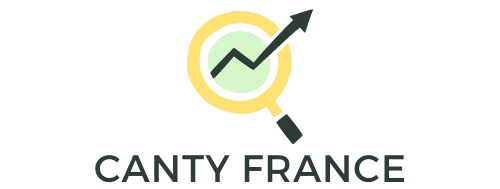What Advanced Mapping Techniques Can UK Delivery Services Use to Improve Route Efficiency?

In an era where time is money, the effectiveness of delivery services is a crucial factor that determines the success of businesses in the UK. The mechanism of achieving this efficiency often lies in the planning and optimization of delivery routes. By incorporating advanced mapping techniques, businesses can minimize costs, improve customer satisfaction, and enhance overall logistics operations. This article explores how these sophisticated mapping techniques can streamline route planning, optimize deliveries, and bolster business performance.
The Importance of Route Optimization in Delivery Services
The art and science of route planning are at the heart of every successful delivery service. It's a complex process that involves analyzing data, considering traffic conditions, and accounting for the logistics of a fleet of drivers. For your businesses, it's not just about getting from point A to point B; it's about doing so in the most efficient, cost-effective manner possible.
Avez-vous vu cela : How to Implement a Successful BYOD Policy in UK Small and Medium-sized Enterprises (SMEs)?
Route optimization incorporates various factors into consideration such as the number of deliveries, delivery locations, driver availability, and vehicle capacity. The primary goal is to devise the most efficient and time-saving route, thereby reducing fuel costs, maintenance costs, and driver overtime. This, in turn, improves customer satisfaction as deliveries are made on time and often with fewer errors.
Advanced mapping technologies play a pivotal role in achieving this optimization. They provide businesses with real-time traffic data, the most direct routes, and even alternative paths in case of unexpected roadblocks or delays.
Dans le meme genre : Top sustainable strategies for innovative real estate development
Advanced Mapping Techniques for Route Optimization
Technology has brought about a revolution in the delivery services industry, especially with the advent of advanced mapping techniques. These sophisticated tools combine real-time traffic data, machine learning algorithms, and predictive analysis to create the most efficient delivery routes.
GPS enabled mapping software offers businesses instant access to traffic data, enabling them to adjust their routes in real time and avoid congested areas. It also provides data on road conditions, weather, and potential hazards, which can be factored into route planning.
Machine learning algorithms can analyze past data on routes, delivery times, and traffic conditions to predict future scenarios. These predictions can then be used to optimize routes, ensuring that deliveries are made in the shortest time possible.
Satellite imagery, another advanced mapping technique, gives a bird's eye view of the delivery area. It enables businesses to visualize the entire delivery route, including any potential obstacles such as one-way streets, dead ends, or inaccessible areas. This allows for more accurate route planning and reduced delivery time.
Implementing Advanced Mapping Software in Delivery Services
Integrating advanced mapping software into your delivery operations can significantly enhance the efficiency of your services. The software automates the route planning process, taking into account all relevant factors such as driver availability, vehicle capacity, delivery time windows, and traffic conditions.
Adopting such software not only saves considerable time and resources but also reduces the scope for human error. It can also accommodate last-minute changes, ensuring that your business can respond quickly to unforeseen circumstances without disrupting the delivery schedule.
Additionally, the software provides a visual representation of the delivery routes, making it easier for drivers to navigate, especially in unfamiliar areas. It also offers real-time tracking capabilities, allowing you to monitor the progress of your deliveries and provide updates to customers.
The Impact of Route Optimization on Business Performance
Efficient route planning and optimization can significantly impact the overall performance of your business. By reducing travel time and fuel consumption, it directly cuts down operational costs. It also increases the number of deliveries each driver can make in a day, thereby boosting productivity and revenue.
Moreover, timely deliveries enhance customer satisfaction, leading to repeat business and positive word-of-mouth referrals. It also gives businesses a competitive edge, as customers increasingly value companies that can provide quick and reliable deliveries.
Another crucial benefit of route optimization is its positive impact on the environment. By reducing the distance traveled and, consequently, the fuel consumed, businesses can significantly lower their carbon footprint. This not only contributes to sustainability efforts but also enhances the company's reputation among environmentally conscious consumers.
In conclusion, advanced mapping techniques offer a viable solution for UK delivery services striving to improve route efficiency. By adopting these innovative tools, businesses can optimize their delivery routes, save costs, and boost customer satisfaction, ultimately enhancing their overall performance and profitability.
Benefits of Advanced Route Optimisation Software
The fast-paced nature of the delivery industry necessitates the use of state-of-the-art technology to stay competitive. Advanced route optimisation software takes centre stage in this quest for efficiency. These advanced software solutions provide an array of benefits that go beyond simple route planning.
One of the most significant benefits is the reduction of fuel consumption. By plotting the most efficient route, businesses can significantly reduce the amount of fuel used for deliveries. Not only does this result in cost savings for the company, but it also contributes to environmental conservation efforts.
Moreover, the data provided by this software can help businesses improve their delivery times. Real-time traffic updates, coupled with predictive analysis, allow for the calculation of the fastest possible delivery routes. This ensures that customers receive their packages promptly, which heightens customer satisfaction.
Route optimisation software also lessens the burden on delivery drivers. With a clear, well-planned route, drivers can focus on the task at hand rather than worrying about navigating complicated routes or dealing with unforeseen road conditions. This can lead to a reduction in driver stress and an increase in overall job satisfaction.
Finally, these advanced software solutions can considerably improve a business's bottom line. By optimising routes and reducing fuel consumption, companies can save a significant amount on operational costs. Furthermore, the increased efficiency can allow for more deliveries per day, leading to increased revenue.
Conclusion: Embracing the Future with Advanced Mapping Techniques
To sum up, the integration of advanced mapping techniques and route optimisation software represents a significant stride in the evolution of delivery services. These sophisticated tools offer a comprehensive solution to the challenges posed by route planning and optimisation.
The use of real-time data, machine learning algorithms, and satellite imagery not only simplifies the route planning process but also ensures maximum efficiency and cost savings. Moreover, the ability of these systems to accommodate last-minute changes and unforeseen road conditions adds a level of flexibility that is invaluable in today's dynamic business environment.
Furthermore, the positive impact of efficient route planning on customer satisfaction shouldn't be overlooked. Timely deliveries, coupled with the improved accuracy that advanced mapping techniques offer, can significantly enhance a business's reputation and customer loyalty.
Lastly, the environmental benefits provided by reduced fuel consumption are a compelling reason to adopt these advanced mapping techniques. As businesses strive to reduce their carbon footprint, route optimisation software represents a significant step towards achieving sustainability goals.
In conclusion, the adoption of advanced mapping techniques and route optimisation software is a strategic move for UK delivery services looking to improve efficiency, enhance customer satisfaction, and steer towards a more sustainable future.
